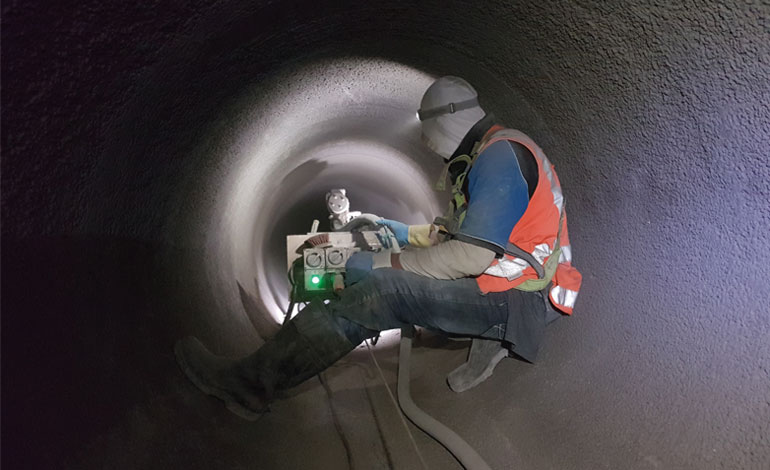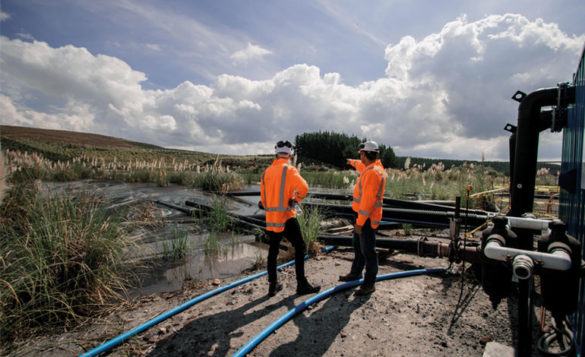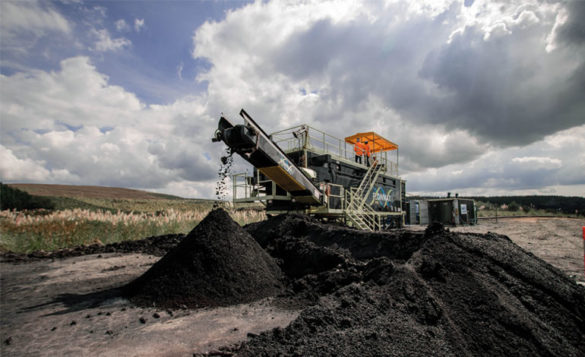Concrete Treatments is a comparatively small family-owned business making a name tackling some challenging and unique projects. Richard Silcock profiles this 11-year-old company and some of its recent achievements.
Based near Pukekohe in South Auckland, Concrete Treatments NZ works throughout the country providing solutions for some complex and challenging civil engineering projects.
Operations manager and co-owner of the business, Leigh Bishop says most of their work comes from local authorities and the construction industry and due to the nature of their work they are often called upon to provide solutions where more usual methods are not always possible.
“We provide a specialist service in hydro demolition, slurry separation, trenchless pipe installations, and the repair of chambers, pipelines and steel culverts,” he says.
At the recent CCNZ / Hirepool Construction Excellence Awards, Concrete Treatments won the top award in the category for projects under $5 million.
This project involved restoring a severely eroded, 50-year old, corrugated iron, 220-metre long, stormwater culvert in suburban South Karori, Wellington.
Leigh says remediation of the culvert presented a number of challenges as it ran from a reserve under a number of private properties and was inundated with large amounts of fill material.
Access was limited, prohibiting the use of excavators and the exact alignment of the culvert was largely unknown due to its curvature and numerous bends.
“The original culvert was installed during the development of a subdivision many years ago and laid in a steep gully following the natural course of a stream-bed and backfilled with up to 11 metres of cover,” says Leigh.
“Due to the time limit imposed by the client(1), the depth and course of the culvert, its proximity to residential properties and the reserve, we opted for a trenchless approach to restore it.”
Extensive preparatory work was first required to manage ground-water inflow. This included the construction of a weir to collect and pump stormwater at the head of the project away from the work site.
The remedial work itself included the use of a special structural lining mortar, GeoSpray(2), which was imported from the USA.
“Together with our client, Wellington Water (Wellington City Council) and their consultants WSP Opus, we researched the product thoroughly to ensure it would provide the desired outcome and a minimum design life of 50 years,” says Leigh.
“We also had to determine the required thickness of the mortar to be applied to the culvert wall. We did this using a calculator supplied by the manufacturer and brought in special application equipment to apply it.
“As a single application was not sufficient to provide the required design thickness of 42.5-50mm, we programmed our applications in stages and in different areas of the culvert.”
Other initiatives taken included environmental and health and safety precautions.
Leigh explained that due to the project being done during the native fish migration season, they sub-contracted a specialist to capture and relocate fish and koura (freshwater crayfish) from within the waterway before they started work.
“Because our people were working 11 metres underground inside the culvert we ensured a high health and safety standard was set, understood and maintained throughout the project which we completed in May last year.”
A slightly different project tackled by the company recently was the installation of a mains water pipe beneath the main-trunk railway line at Drury, South Auckland.
This was achieved by first pneumatically driving 24 metres of 600mm diameter steel casing beneath the track foundation using a special pipe ramming machine.
“To minimise any disruption to train timetables we only had a window of 24 hours to complete the job over a weekend,” says Leigh.
“As a precaution against any uplifting or heave of the track while we carried out the work, for every three metres of pipe casing installed, we stopped and checked the track level for any movement beyond the 5mm tolerance allowed before continuing.
“Once the casing was installed, the earth was removed from within using a hydrovac and then the smaller mains-pipe slip-lined through and secured in position by foamcrete grout which we pumped in.”
Pipes leakage is another scenario that Concrete Treatments often gets called upon to remedy and following the discovery of severe water infiltration through 96 damaged pipe-joint seals in a stormwater pipeline on the North Shore, Concrete Treatments used a range of special polyurethane resins injected under pressure to stop the leaks.
“The types of resins we use react with water and expand to form a watertight and flexible seal,” says Leigh. “Flexibility is important as it allows for any movement in the pipe.
“Like the Karori job, we were working in a confined space inside the pipe and because of this our operators are all ‘confined space qualified’ and have undertaken special training courses entailing rescue and breathing apparatus drills.”
The company is presently working on a sludge removal and dewatering project west of Huntly. This entails dredging and processing coal slurry, clay, sand and silt.
“The 13-hectare area we are working could be likened to a swamp,” says Leigh. “The dredged material is pumped to special holding tanks, flocculated using our automated floc dosing unit and then pumped to a 40-foot dewatering unit.
“The dewatering unit is a vacuum filter coupled to the flocculation system and provides high flow processing, separating the solids from the water.
“The solid material is then ‘conveyered’ to stock piles for trucking away and the clean water is fed back into cleaned areas of the pond.”
Concrete Treatments is the recipient of a Brian Perry Health and Safety Award – largely for its work in Christchurch for SCIRT during the post-earthquake remedial works.
Asked why the company has been so successful, Leigh says he believes it can be directly related to the staff, their positive attitude and the team culture that exists.
“We operate in a special niche, providing specialist services,” he says. “We achieve this through having a great team of trained professionals.”
FOOTNOTES
1. The contract duration stipulated by the client was for it to not exceed 80 days for the entire project, including reinstatement and clean-up.
2. GeoSpray is a micro-fibre reinforced, ultra-dense, nano-ceramic geopolymer liner that, through centrifugal casting, enhances the structural integrity of an existing pipeline. It is a cost-effective and environmentally-friendly solution used for severe infrastructure degradation found in aging pipes and culverts etc.
Main feature image: A technician spraying the mortar to the inside of the Karori stormwater pipe using a special applicator
This article was first published in the November 2019 issue of Contractor Magazine.




